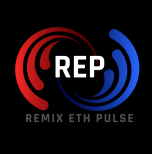What Happened?
In May 2025, Bitcoin prices surged close to historic highs, despite a decline in daily trading volume, with average transaction fees rising to $2.4, indicating strong market demand for limited block space. The U.S. spot Bitcoin ETF attracted over $2.8 billion in net inflows in the first half of May, pushing total assets beyond $122 billion, demonstrating significant interest from institutional investors. Meanwhile, the non-liquid supply of Bitcoin reached an all-time high, suggesting potential supply shocks in the market. The Federal Reserve maintained interest rates, and inflation concerns arising from price increases due to tariffs reinforced Bitcoin’s appeal as an inflation hedge. These macroeconomic factors, combined with ETF fund flows, collectively propelled Bitcoin’s recent rise.
Price Approaches Historic Highs, Transaction Fees Surge
Recent data shows that Bitcoin performed strongly in May 2025, with prices soaring to levels close to historic highs, while transaction fees on the blockchain also rose, reflecting sustained demand for the largest cryptocurrency. Since early May, Bitcoin’s price has continued to climb. On May 18, the price reached approximately $106,000, and on the 19th, it even surpassed this mark, nearing the historical record of $108,786 set in January. Although there was a slight pullback afterward, it remains around the high of $104,500.
Alongside the price increase, the average transaction fee on the Bitcoin blockchain has also risen. According to data from The Block, the seven-day moving average transaction fee for Bitcoin has increased by about $1 since early May, reaching $2.4, marking the highest level since 2025. The average daily transaction count peaked at 507,000 on April 22, and although it has since declined by 35% to 330,000, the rising transaction fees seem to indicate an increasing demand for limited block space.
Supply Tightening and Institutional Inflows
Analysis indicates that Bitcoin’s “non-liquid supply” (the amount of Bitcoin in wallets that have not had trading activity for a long time) has reached a historic high, which also means the number of Bitcoins available for trading in the market is decreasing. If demand continues to grow, this supply tightening could trigger further price increases. Meanwhile, Bitcoin’s dominance in the cryptocurrency market is gradually recovering, suggesting that the previous decline in Bitcoin’s market share was not due to a fundamental shift in market structure (such as entering a long-term altcoin bull market), but rather a result of short-term capital movements within the market.
Additionally, the strong inflows into the U.S. spot Bitcoin ETF provided significant momentum for this rally. In just the first half of May, the U.S. spot Bitcoin ETF recorded over $2.8 billion in net inflows, with a single-day inflow of $674.9 million on May 2. As of May 16, the cumulative inflow reached $41.77 billion, with total assets exceeding $122 billion. Unlike previous rallies driven by retail speculation, this rise in Bitcoin is primarily supported by strong ETF capital flows, stable interest rate expectations, and renewed discussions surrounding inflation.
The macroeconomic backdrop has also bolstered Bitcoin’s performance. The U.S. Federal Reserve has maintained the benchmark interest rate at 4.25% to 4.50%, adopting a cautious stance. However, resurfacing inflation concerns, particularly warnings from U.S. retailers like Walmart that trade tariffs could lead to rising product prices in the future, have once again heightened Bitcoin’s appeal as an inflation asset. Looking ahead, market sentiment towards Bitcoin is generally optimistic. With increasing demand, tightening supply, and strong institutional capital inflows, Bitcoin is positioned within a critical upward channel.
References: decrypt, the block

